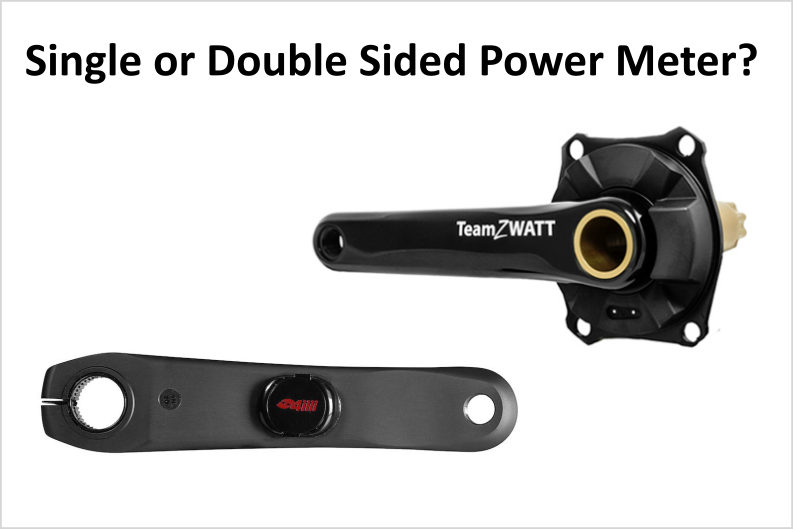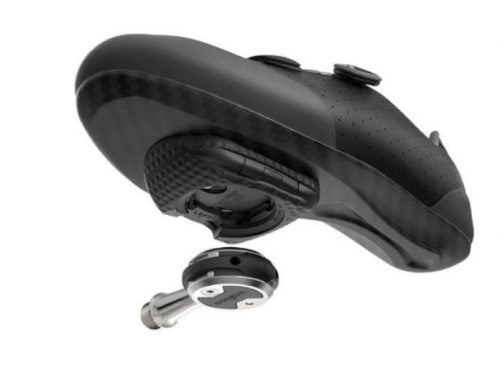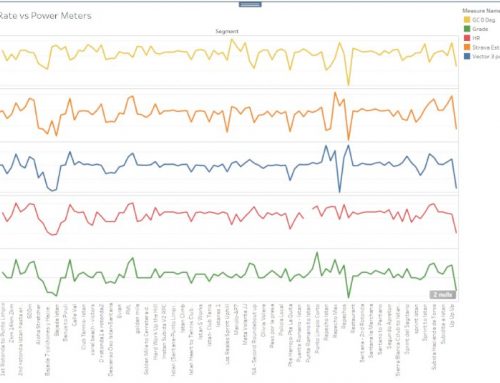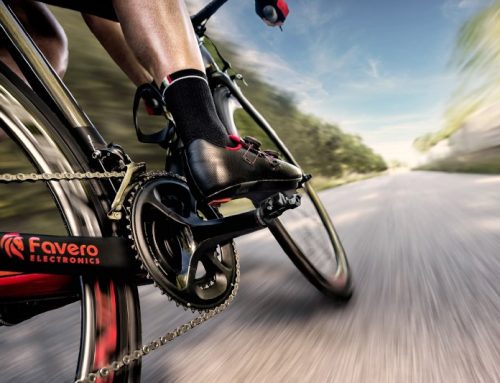You really want a power meter and ideally a double sided one! The problem is that although prices have dropped dramatically over the past few years they are still a BIG investment. You could easily spend more on the meter than you spent on your bike.
The biggest question you have probably asked yourself is “Do I really need a power meter that measures output from both legs or just from one”
Single sided meters measure the power from your left leg and double it to estimate your total power output. (Most of us produce more power on the right so left hand power meters will slightly under report power for most of us)
Double sided meters measure both legs and so give you a more accurate figure and crucially (or not) measure your left/right imbalance.
This is an important question because (Logically) measuring a single side is much cheaper than measuring both.
It’s a well known fact that almost everyone has an imbalance between legs.
It’s called pedaling asymmetry and is around 1-3% for most people and the right leg is usually dominant.
As we tire the balance between legs changes. In most cases it changes in favour of the leg that was dominant when we started our ride. In a few cases the imbalance reduces towards zero with ride time and in fewer still it reverses.
Here’s a fantastic chart produced by Zpider Power Meters. These are results from their FTP20 study where a group of volunteer testers contribute their Zpider power meter monthly FTP data for research purposes.
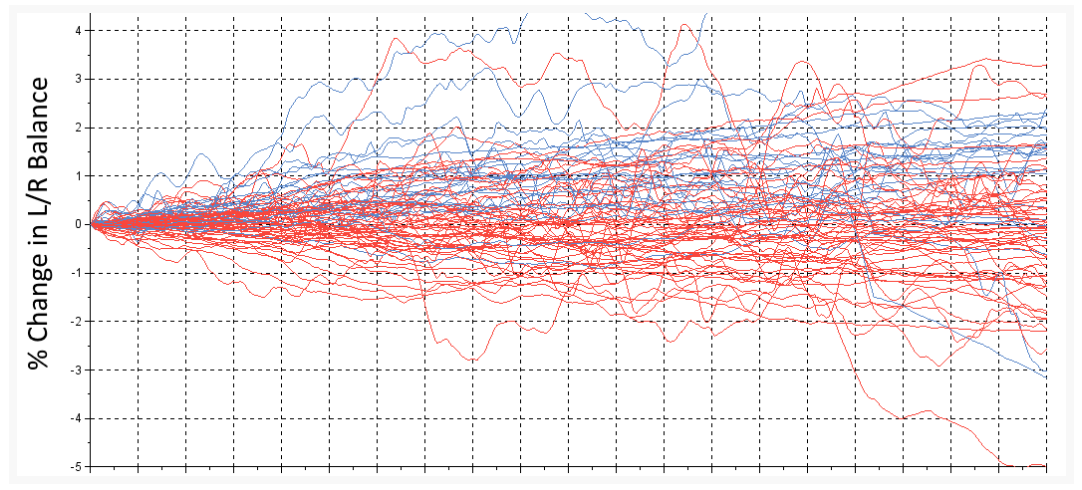
Pedalling Asymmetry as reported by Zpider power meter riders
Red curves show riders who start out with a stronger right leg. Blue curves show riders that start out with a stronger left leg. If power shifts towards the right leg during the 20 minutes FTP test the curve goes up on this plot (and vice versa).
All power meters show different results, the key issue is consistency not the absolute value
If your imbalance consistently starts at around 1 percent and increases to 3% (as almost all examples in this sample do) then I think it’s reasonable to use a single sided meter as the overall power will be within a reasonable tolerance,
Imbalances of up to 15% have been reported but these are generally due to injury. Obviously if you have that kind of major imbalance it would need to be compensated for (or you would need a double sided power meter).
Before deciding on a power meter I suggest checking out your pedaling imbalance and the best way to do this is to rent a doubled sided meter.
My local cycle shop rents out a pair of Garmin Vector 3 pedals for 15 euro a day. I use these when I do my monthly FTP test.
Here are a few things that can affect pedaling imbalance:
- One leg simply being stronger than the other
- Riding Position (Sitting to one side puts more weight on that leg and so increases power on that side)
- Ankling asymmetry due to excessive dorsiflexion on one side
- Injury or Weakness of Joints, especially the hip joint. (Anatomic asymmetry).
So can I use a Single Sided Power Meter?
The first thing you need to do is check out your pedaling imbalance, ideally by renting a double sided meter.
If your imbalance is within a tolerance you are happy with you can safely buy a single sided meter. The 4iiii crank is a good choice because you can dial in an adjustment to compensate for the imbalance.
Note that because Single sided Power meters double the power measured on the left hand side (the weaker side for most of us) then the actual result is more accurate than you might think. For example if the right leg is 3% more powerful at the end of the test and on average 2% more powerful, lets say 100 Watts Left vs 102 Watt Right, then a double sided power meter would show 202 watts and the single sided version just 200 Watts which is a 1% difference. Of course if your left leg is stronger you going to overstate the power by the full 2% (204 Watts).
If your imbalance is more than 3% at the end of your 20 Minute FTP test you need to investigate further to find the cause and perhaps you need a double sided power meter.
There is no conclusive evidence that training to reduce imbalance is a good idea. It seems intuitive that it would be worth doing but it is very dependent on the reason for the imbalance.
Most manufacturers that offer single side power meters allow you to upgrade to double sided so it’s not a onetime decision although it may cost more to upgrade later than to go straight to the double sided kit up front.
4iiii make a left only crank meter for Shimano that lets you enter a value to adjust for the imbalance at around 329 Euro/375 USD
TeamZWATT make a really affordable spider based double sided power meter for Shimano at around 450 Euro/520 USD
I would say that in almost all cases a Single sided power meter will do the job. If budget isn’t an issue or you have a severe imbalance then go Double sided.
To read the ZPider FTP20 Cycling Power Meter Research Study click here
